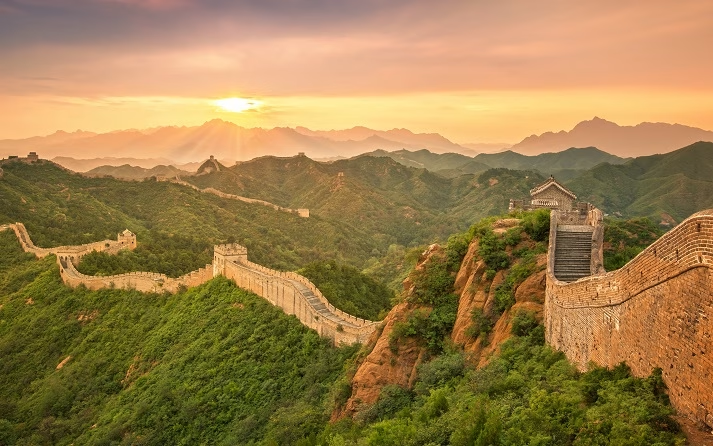It might sound unbelievable at first, but it’s true: over 40% of the world’s population lives in just two countries — China and India. As of 2025, China and India combined have a population of nearly 2.8 billion people, while the global population stands at around 8 billion. That’s more than 2 out of every five people on Earth living in these two nations alone.
So, what makes these two countries so densely populated? Is it geography, history, economy, or something else? In this blog, we’ll explore the key reasons behind this demographic phenomenon and the implications it holds for the future.
1. A Long Head Start in Civilization
Both India and China are among the world’s oldest civilizations, with histories that date back thousands of years. Human settlements in the Indus Valley and Yellow River regions began as early as 3000 BCE.
This long, uninterrupted history gave them a significant head start in population growth. Unlike many parts of the world that faced repeated population declines due to war, disease, or colonization, China and India developed stable agricultural societies early on, allowing their populations to grow over thousands of years.
2. Favorable Geography and Climate
Geography plays a massive role in population distribution. Both countries possess extensive areas of fertile land, abundant water resources, and temperate climates — all of which are ideal for agriculture and human habitation.
India is home to the Ganges River Basin, one of the most fertile and densely populated regions in the world.
China has the Yangtze and Yellow River basins, which have supported dense populations for thousands of years.
These natural advantages allowed both nations to develop agrarian economies, which historically require large labor forces, and therefore, lead to larger populations.
3. Agricultural Societies Supported Bigger Families
Until the Industrial Revolution, the majority of the world’s population was employed in agriculture. In such societies, having more children was beneficial because:
Children could help in the fields.
They provided economic security for aging parents.
Higher child mortality rates encouraged families to have more kids.
India and China, with their agrarian traditions, followed this pattern for centuries. Rural families often had many children as a form of insurance against hard times. This cultural norm contributed significantly to population growth.
4. Colonial and Political Influence
Unlike parts of Africa and Latin America, India and China were not heavily depopulated by colonization or transcontinental slavery. Though India was colonized by the British and China faced internal upheaval and foreign aggression in the 19th and 20th centuries, neither experienced the massive population loss that occurred elsewhere.
Furthermore, post-independence in the mid-20th century, both countries focused heavily on development and nation-building, creating the infrastructure necessary to support large populations.
5. Technological and Medical Advances
After World War II, both nations underwent significant public health improvements, particularly in:
Access to vaccines and antibiotics
Sanitation and clean drinking water
Infant and maternal health
As a result, death rates fell dramatically, while birth rates remained high, creating a population boom. This demographic transition didn’t happen evenly worldwide, which is one reason China and India continued to grow rapidly while other countries stabilized.
6. Limited Early Population Control
Although both countries eventually adopted population control policies, they came relatively late.
India introduced family planning programs in the 1950s but struggled with implementation due to cultural resistance and rural reach.
China famously introduced the One-Child Policy in 1979, which slowed growth, but by then, its population had already surged past 1 billion.
Earlier control could have significantly altered today’s numbers, but the timing and effectiveness of these programs varied, allowing both countries to reach immense sizes before stabilizing.
7. Urbanization and Economic Growth
In recent decades, both countries have experienced massive urbanization and economic booms:
China’s shift to a manufacturing and export-based economy created millions of jobs, drawing people into cities and improving living standards.
India’s technology and services sector has driven urban growth and a rising middle class.
These changes haven’t just supported large populations — they’ve sustained and even encouraged them, as economies adjusted to the demands of younger, growing populations.
8. Cultural Factors and Family Structure
In both nations, family plays a central role in society. Multigenerational households, cultural emphasis on children, and religious or philosophical teachings often favor large families.
In India, for example, children are often seen as blessings and as essential for carrying on the family name, especially in rural and conservative communities. In China, Confucian values traditionally emphasized filial piety and lineage, which historically encouraged families to have more children.
9. Sheer Size and Land Availability
One obvious factor is land size:
China is the 4th largest country by area.
India is the 7th largest.
Their sheer geographic area provides the capacity to support large populations, especially in regions with good infrastructure and arable land. In contrast, countries like Bangladesh or the Netherlands may be densely populated, but their small size limits the overall growth of their populations.
10. Population Momentum
Even though both countries have seen declines in fertility rates in recent years, their overall populations are still growing due to population momentum—the result of a large base of young people entering reproductive age.
Even with fewer children per couple, millions of couples still means millions of new births each year.
The Impact of These Population Giants
With over 40% of the global population, China and India are global heavyweights — economically, politically, and culturally. Their large populations come with both advantages and challenges:
Advantages:
Massive labor force
Large domestic consumer markets
Youth-driven innovation and productivity
Challenges:
Resource scarcity
Environmental degradation
Urban overcrowding
Healthcare and education access
Both countries are investing heavily in infrastructure, technology, and social programs to manage their demographic reality and ensure sustainable growth.
Final Thoughts
The fact that 40% of humanity lives in just two countries is a powerful reflection of history, geography, and human resilience. China and India are not just large in terms of numbers — they’re complex civilizations with deep roots and global influence.
As we move further into the 21st century, how these two nations manage their populations, economies, and resources will shape the future of the entire planet.



